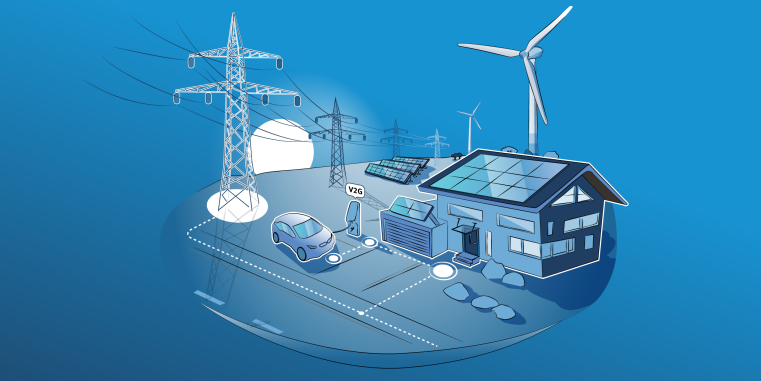Vehicle-to-grid: Key Technology for the Energy and Mobility Transition?
The innovative vehicle-to-grid technology enables electric vehicles not only to obtain power from the grid, but also to return energy stored in their batteries to the grid, for example during peak loads. In this way, electric vehicles can be an efficient solution for storing energy from renewable sources cost-effectively. But what regulatory hurdles are hindering the widespread adoption of this technology? And what infrastructural and technical standards are required for a broad launch? Dr Christopher Hecht from the Institute for Power Electronics and Electrical Drives (RWTH Aachen University) and Dr Anica Mertins from NOW GmbH (National Center for Charging Infrastructure) explored these questions at the MEET Academy Online on November 20, 2025.
Stability for the Power System: Electric Vehicles as Decentralized Storage Devices
Technologies such as “Vehicle-to-Home” (V2H) and “Vehicle-to-Grid” (V2G) stabilize the power grid and increase the degree of self-sufficiency in private households, but especially V2G use cases were not financially attractive until now. “With the recent decision of the German Parliament to overturn the double grid fee obligation, bidirectional charging will become economically viable in Germany for the first time from 2026,” said Hecht, explaining the latest developments. The legislative reform removes a key hurdle: Households no longer pay grid fees for electricity that is fed back into the grid and can thus stabilize the system during peak loads. In addition, double taxation will also be eliminated, at least for V2H, starting next January. “Similar tax reforms are also expected to be examined by the federal government for V2G,” Mertins predicted in her presentation.

Furthermore, by the end of the year, 20 % of mandatory installation cases are to be equipped with smart meters, which are an essential technical prerequisite for bidirectional charging. “Steps like these pave the way for a broad launch. There is currently a strong political will to make bidirectional charging as easy as possible for as many users as possible,” Mertins said. Both speakers agreed that the technical requirements for electric vehicles and charging points must be further standardized and the necessary interfaces created so that the technology becomes more consumer-friendly and can establish itself on the market.
Next MEET Academy Online in Spring 2026
The 25th MEET Academy will take place in spring 2026. There will be another exciting topic. The MEET Academy, which is free of charge, is organized by MEET Battery Research Center at University of Münster.

